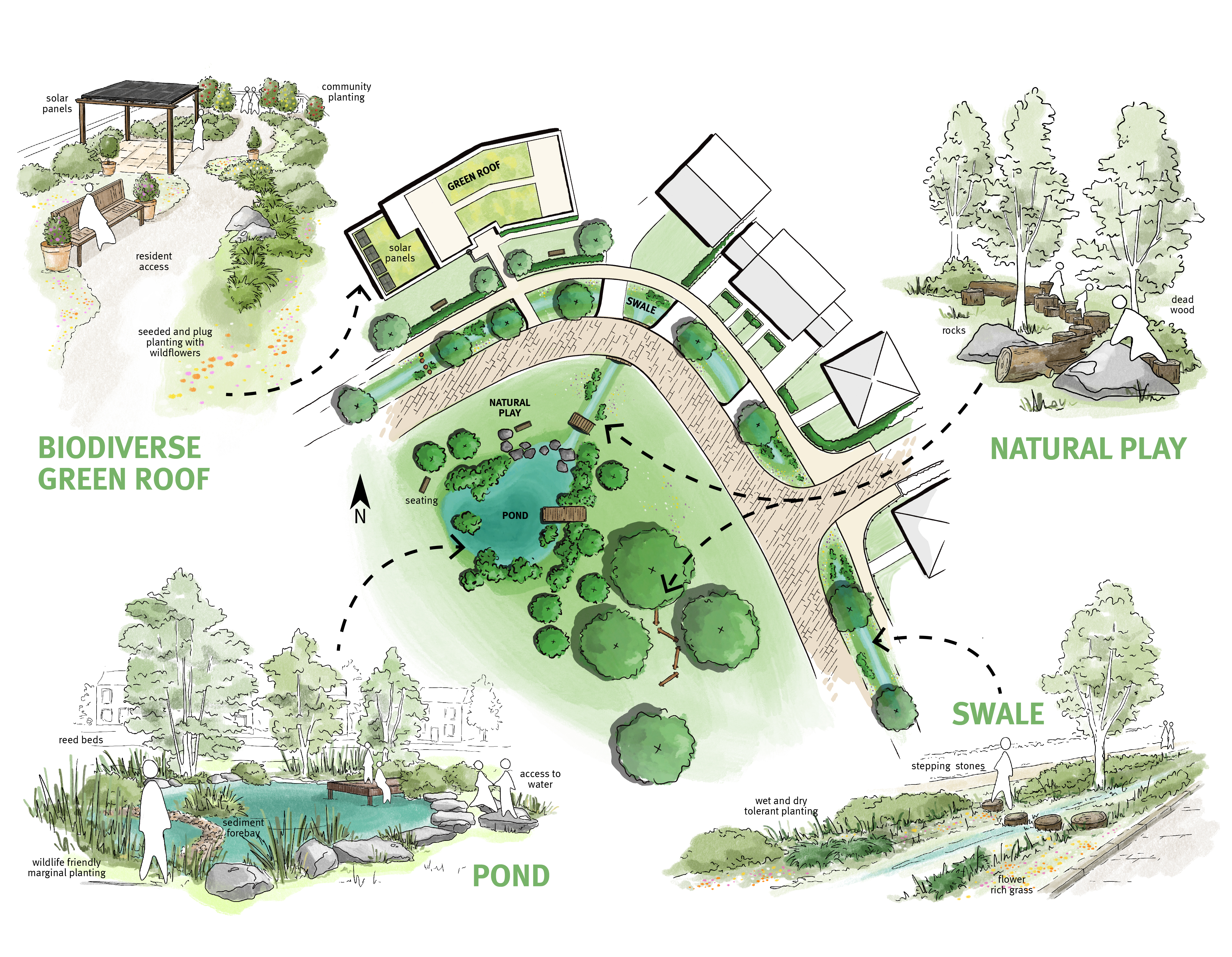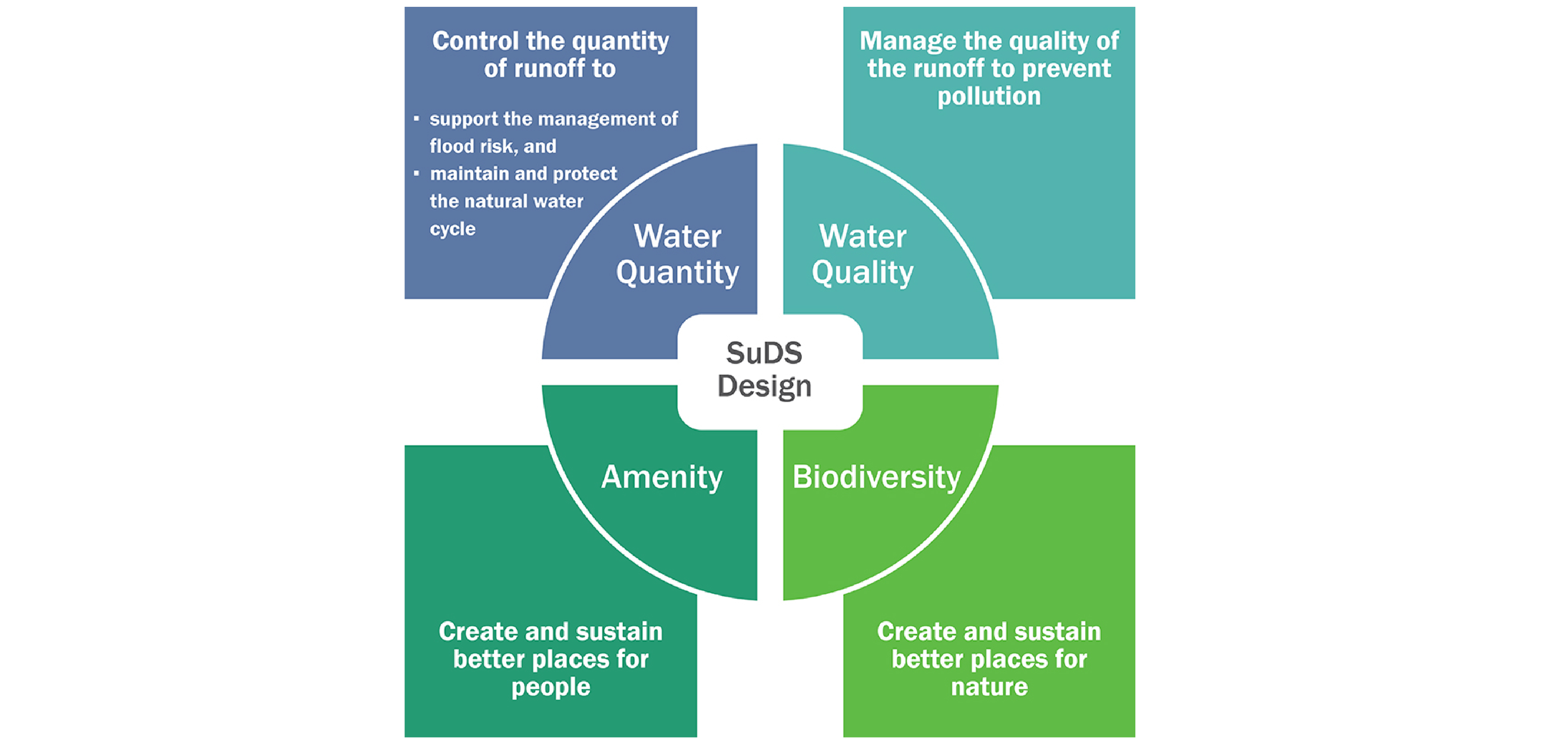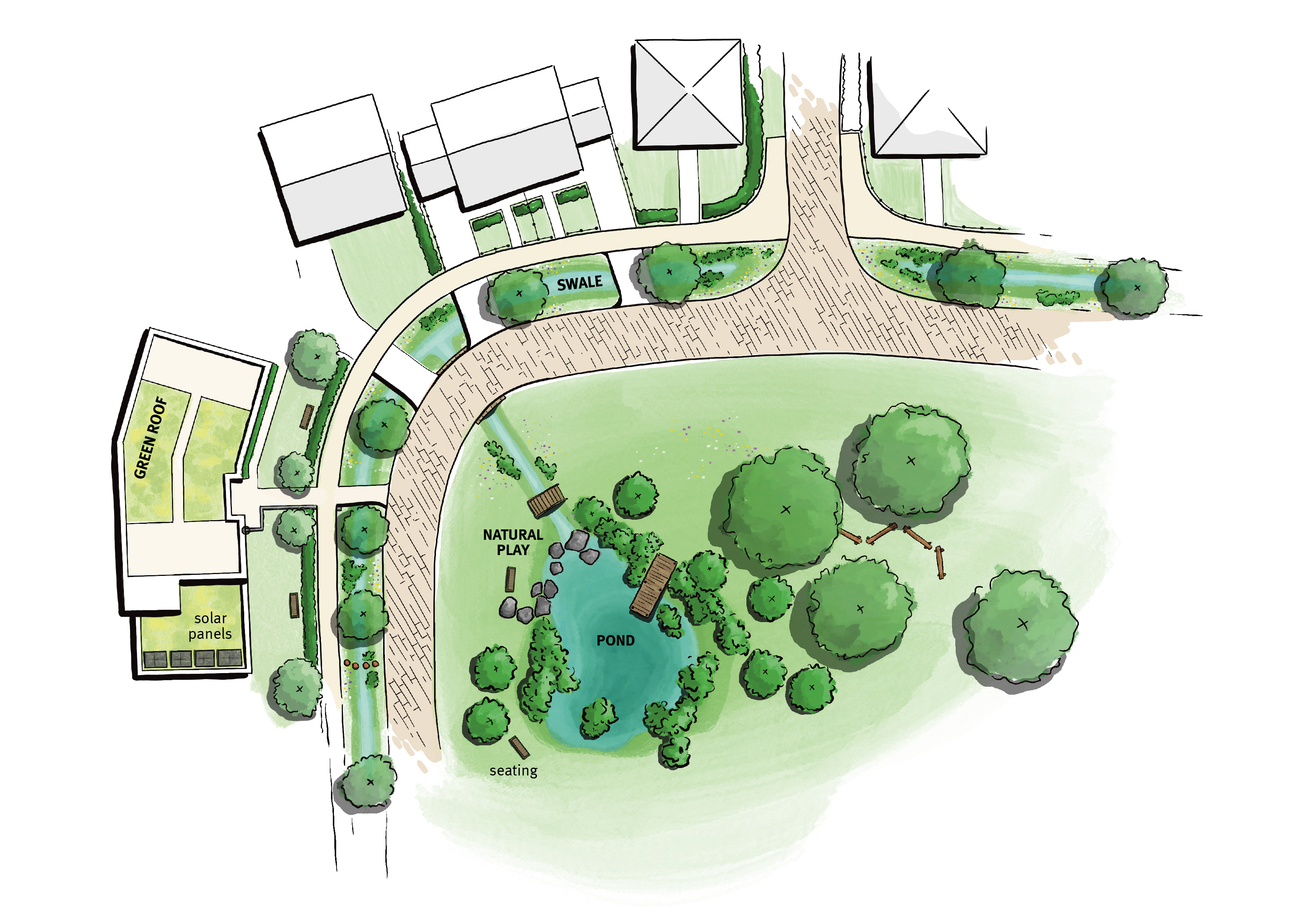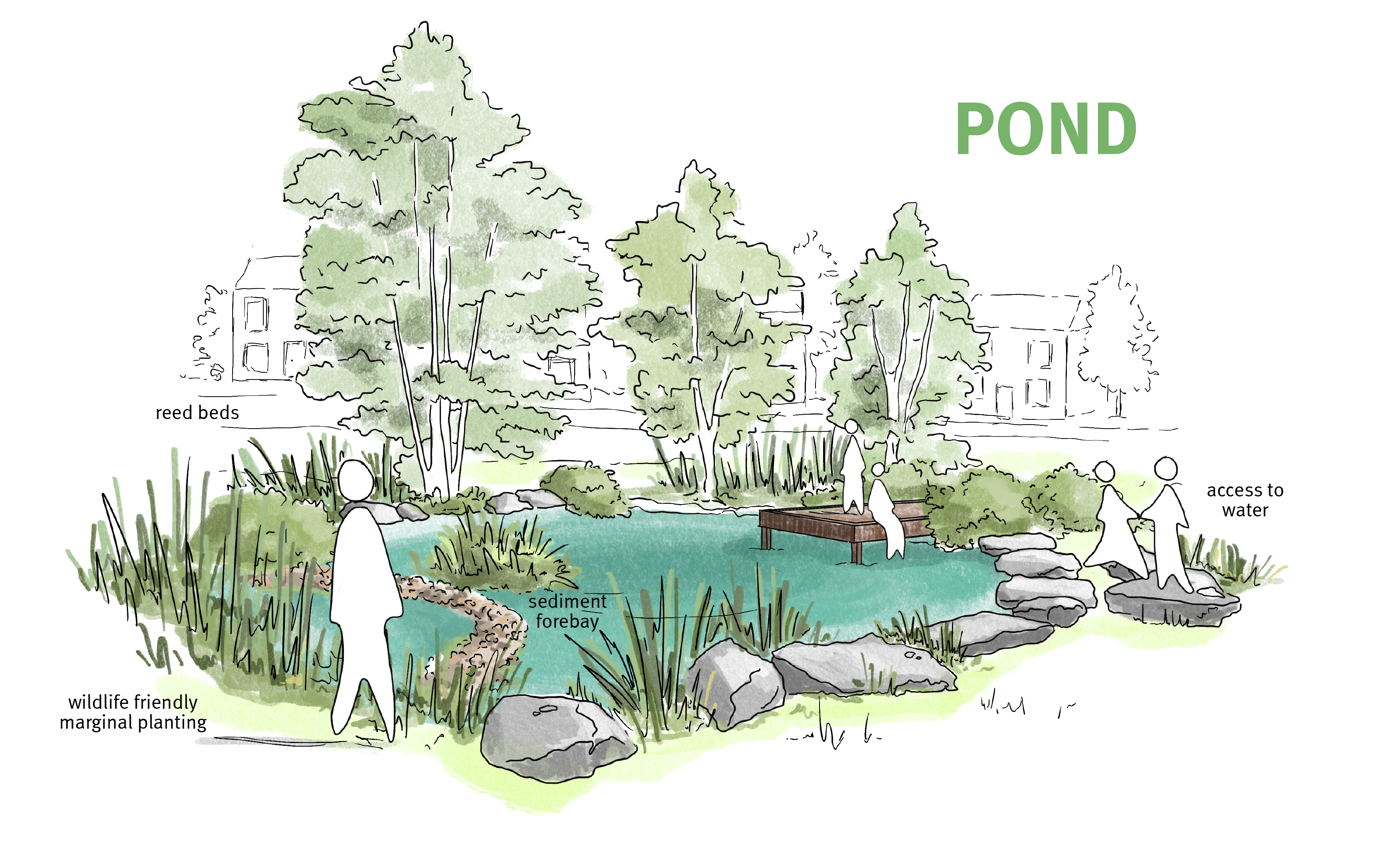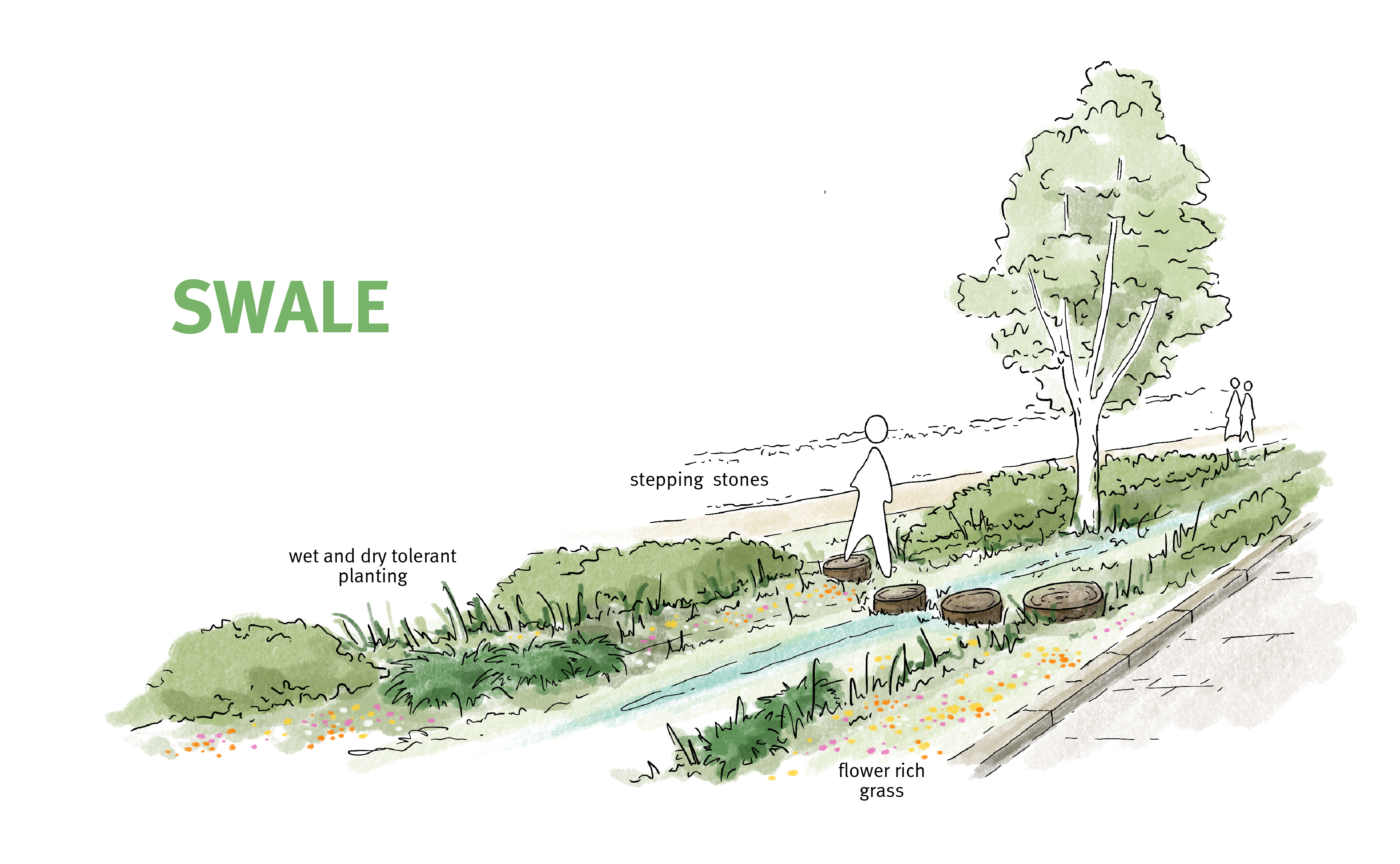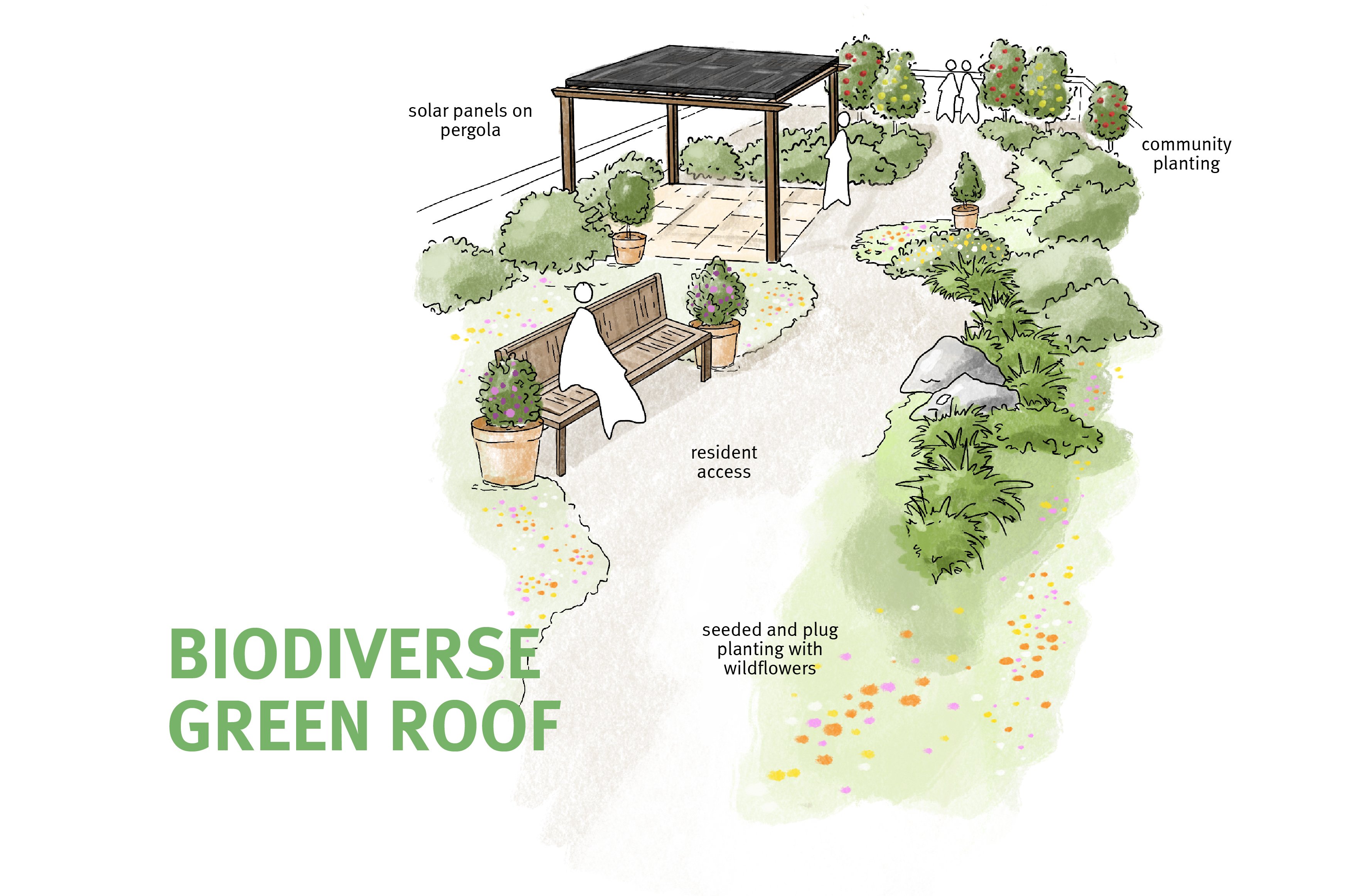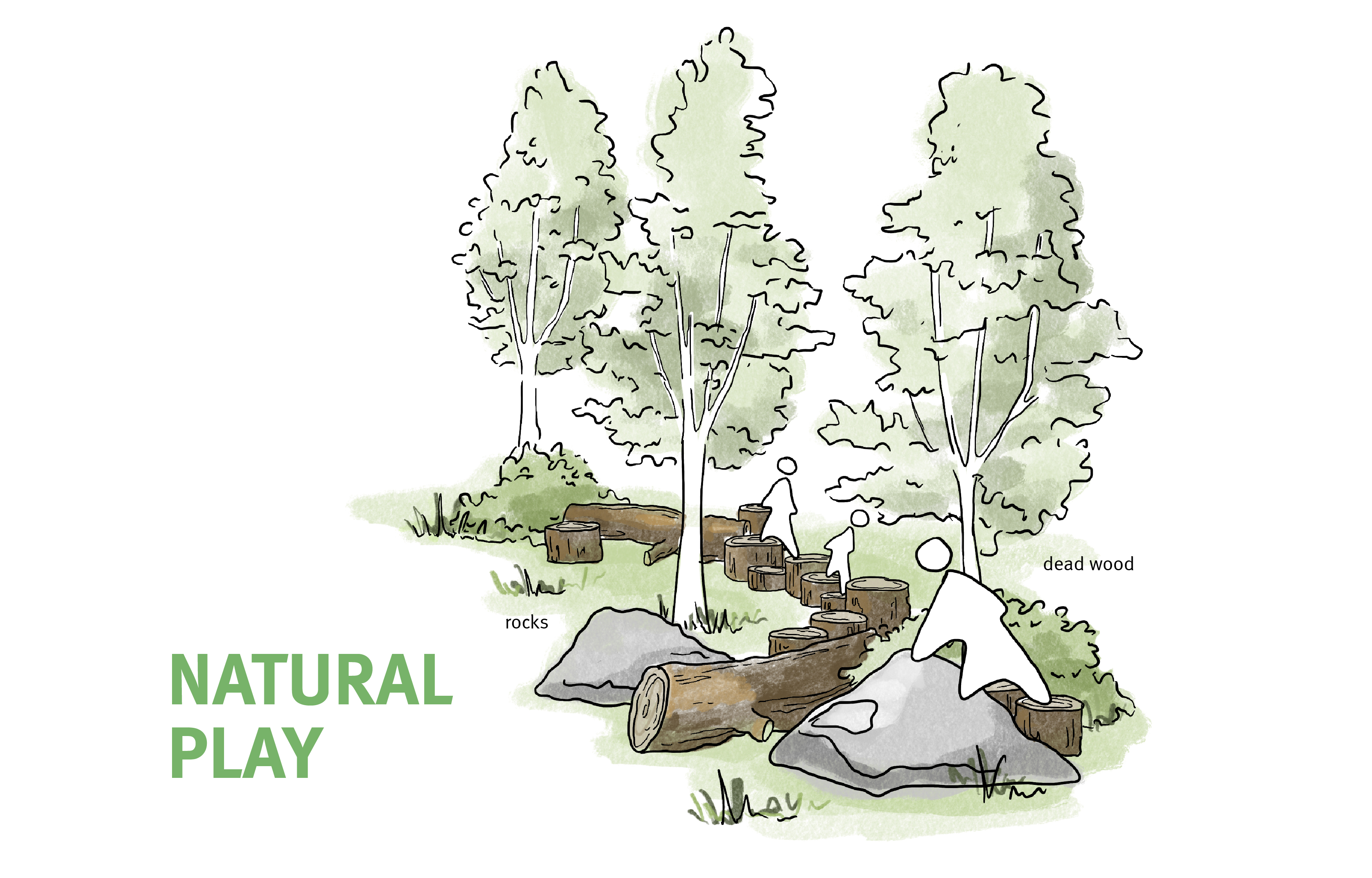Landscaping & Green Infrastructure Design Guidance
Understanding Green Infrastructure
Green Infrastructure (GI) can be defined as a carefully planned network of high quality natural and semi-natural assets and habitat types, of green and blue spaces, and other strategically planned environmental features that maintain and deliver our ecosystem services (Essex Green Infrastructure Strategy, 2020). GI provides multifunctional benefits integral to the health and wellbeing of our communities and to the ecology and economy of the county. The delivery of well-designed GI often incorporates flood management, recreation, and habitat principles at minimal additional cost. It is important that the diversity of these functions and benefits is recognised in planning, policy, and decision-making.
Essex has a GI Strategy (2020) and GI Standards (2022) which should be used in conjunction with the SuDS Design Guide to ensure developments are to the highest standard possible for the residents, communities, and biodiversity of Essex.
For further information on Green Infrastructure in Essex please see Green Spaces and Biodiversity.
GI and SuDS – Biodiversity and Amenity
“Incorporating SuDS into new urban schemes can reduce flood risk, prevent pollution to our rivers and fight the effects of climate change. At the same time, it can offer more attractive, natural and watery places that enhance biodiversity” by creating new habitats or improving existing ones. (London Play, 2010, p6)
The CIRIA SuDS Manual C753 identifies that there are four main categories of benefits that can be achieved by SuDS: water quantity, water quality, amenity and biodiversity. In the past, water quantity and water quality have taken precedence over biodiversity and amenity when designing drainage systems for new developments. Good SuDS design delivers all four pillars of SuDS design. Biodiversity value can be delivered by even very small, isolated SuDS features such as tree pits and rain gardens, but the greatest value is achieved where SuDS are planned as wider green landscapes, as they can then help provide important habitat and wildlife connectivity.
Biodiversity Net Gain (BNG) was made mandatory under Schedule 7A of the Town and Country Planning Act 1990 (as inserted by Schedule 14 of the Environment Act 2021). BNG requires developers to ensure that natural habitats are enhanced, with a 10% increase in habitat value for wildlife compared with the pre-development baseline. While BNG delivery will not be limited exclusively to the use of SuDS, above ground SuDS features are an excellent way of meeting BNG requirements. The use of well-designed swales, ponds, bioretention areas, wetlands and other green elements, will present opportunities for habitat creation and the introduction of green/blue corridors across a site. These benefits will be in addition to the water quality measures provided by these kinds of SuDS features.
The aim of biodiversity in relation to SuDS is to protect local habitats and species, contribute to habitat connectivity and create diverse, self-sustaining, and resilient ecosystems (The CIRIA SuDS Manual C753, Table 6.1). Water managed on the surface can provide habitat for flora and fauna, and therefore increase and enrich biodiversity. Generally, by keeping water on the surface, the costs are less than when compared with the installation cost of conventional drainage systems.
The amenity aspect of SuDS involves maximising multi-functionality, enhancing visual character, safety and resilience to future change, and supporting community environmental learning. Designing SuDS features with shallow side slopes, and incorporating opportunities for natural play and biodiverse planting will enhance a features amenity and educational value.
Achieving Biodiversity and Amenity through Good SuDS Design Practice
Designing SuDS space for biodiversity and amenity requires drainage designers, urban and landscape designers, planners and ecologists to work together. The aesthetic appeal of SuDS features plays an important role in ensuring designs provide multiple functions. Section 6.3 of the CIRIA C753 The SuDS Manual provides guidance on how to maximise biodiversity value within a SuDS design. Best practice SuDS design for biodiversity will ensure colonisation is high quality, high value and robust, with little or no extra cost beyond the requirements for delivering water quantity and quality. The formal process of integrating biodiversity considerations and delivery into all stages of the planning, design and development process is set out in BS 42020:2013.
Structural Variability and Biodiverse SuDS Planting
Structural variability involves subtle changes in ground profile, both vertically and horizontally. Incorporating a ‘train’ of SuDS components with structural diversity as part of the overall SuDS scheme, will enhance biodiversity when combined with a range of vegetation types (wildflowers, grasses, drought-tolerant species, marginal aquatics, wet grasslands, open water, trees and shrubs). Therefore, careful consideration should be given to ground contouring, planting, and inlet and outlet design to maximise biodiversity and amenity value.
With biodiversity as a key objective, plant selection should be focused on introducing a wide range of plant species, including pollinator supportive varieties. When planted together, species should be chosen to maximise all year-round leaf coverage, flowering and fruiting periods, at a variety of heights, and promote natural colonisation. Amenity grass, meadows, bulbs, and perennial planting all encourage infiltration. Consideration must also be given to herbaceous plants, shrubs, trees, scrub, wet woodland and marginal planting. Each development site will have varying geological and hydrological conditions, and therefore it is recommended that specialist advice is sought from relevant landscape professionals, ecologists and arboriculturists. Wherever possible, the use of UK native species is heavily encouraged. Furthermore, consideration must be given to the maintenance and water management of any newly planted areas, to ensure they are maintained in accordance with best practice as set out in The SuDS Manual (C753).
Feature Specific Biodiversity Guidance
Ponds/Basins
- The use of a sequence of riparian dry-level benching, low flow channels, gentle graded side slopes, wet shallow safety benches, shallow and possibly deeper water zones to help deliver a physically and ecologically diverse landscape.
- The use of multiple basins of varying size and shape. Undulating surfaces and convoluted edges provide the greatest wildlife value.
- Incorporation of a range of vegetation types including mosaics of marginal planting and grasses of various heights to act as a natural edge barrier. Reed beds provide further filtration. Dense vegetation can be considered on the side slopes to discourage wildfowl use. Where wildfowl use is to be encouraged, “bays” and breeding “islands” can be integrated into the shape of larger ponds. Trees and shrubs can be considered to create lightly shaded areas.
- The creation of micropools or wetland zones at the base of the basin. Shallow sediment forebays allow for opportunities for natural play.
- Best located away from artificial light sources.
- Any topsoil or subsoil excavated from the creation of ponds, can be used to form banks, mounds and terraces. These features can provide mosaics of permanently wet, temporarily wet and dry features, which aid the development of a wide range of habitats.
Sites which are within a 13km radius of an airport should design wildlife ponds to minimise the risk of birdstrike in accordance with Aerodrome Safeguarding. For further guidance please see The UK Civil Aviation Authority’s information on Wildlife Hazard Management.
Swales
- Using flower rich turf or wildflower plugs added to standard turf, rather than standard turf alone.
- The creation of shallow grassy wet areas along dry swales particularly towards the downstream end. Shallow scrapes (as small as 1-2m wide and 100 mm deep), linked with sinuous surface channels of varying widths will increase opportunities for wildlife and slow water flows.
- Avoid smooth finished surfaces and ‘tidy’ edges which limit habitat development.
- Variations in topography to protect swales from insensitive mowing regimes. The maintenance plan may require reviewing to allow for less regular mowing.
Green Roofs
- Using a biodiverse mix of seeded and plug planting with native drought-tolerant wildflowers.
- Varying the depth of the substrate to provide a micro “stepping stone” habitat.
- Incorporating community orchards.
- Incorporating green walls can also be considered where the structural design of a development limits the use of green roofs.
Natural Play
- Maximising opportunities for providing or retaining dead wood in dry or wet areas. Dead wood can be used for steppingstones and for the creation of bridges for children's play.
- Standing dead wood upright provides cavities for birds and bats for breeding and roosting and overall is seen as valuable to lichen, mosses, fungi and invertebrates.
- Installing rain chains in replacement of conventional downpipes.
- SuDS features can incorporate mini water wheels, water shoots and engaging water sculptures that support play and child led learning.
In addition to the above, there are many other SuDS and green infrastructure features which can be incorporated into a design to enhance biodiversity and amenity. Raingardens, tree pits, and green walls are ideal where spatial constraints exist on site. Please refer to the Technical Design Guidance for further information.
Page updated: 21/01/2025
